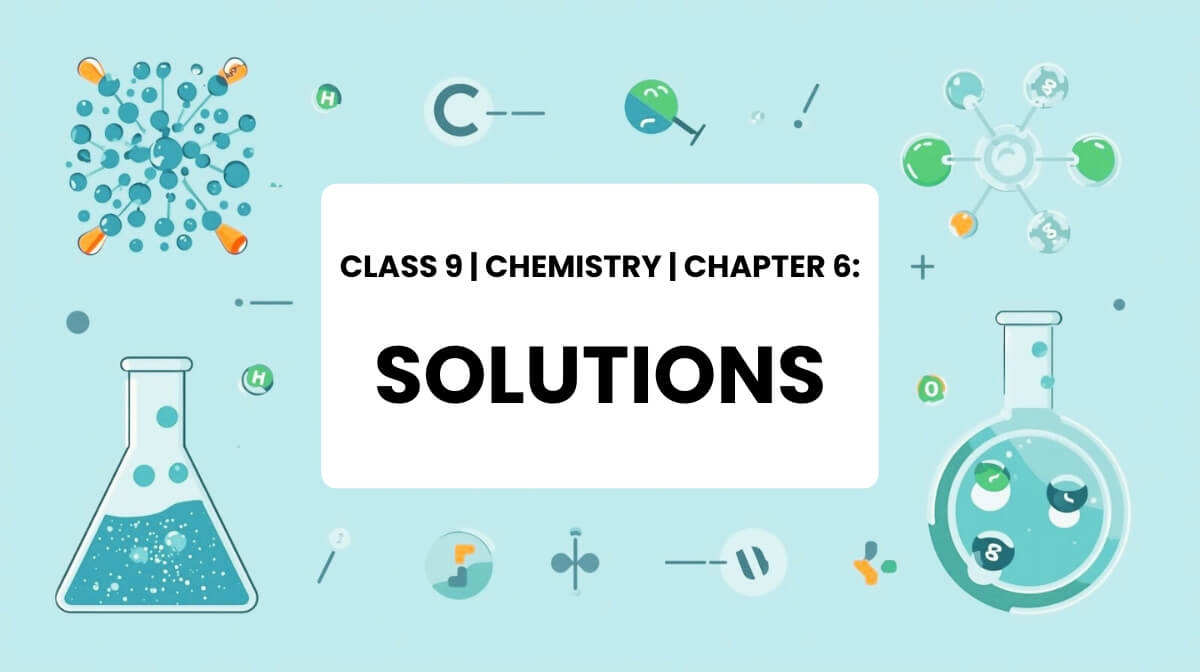Chapter 6 covers the concept of solutions, their types, properties, and the factors affecting solubility. It explains concentration units, the difference between saturated, unsaturated, and supersaturated solutions, and practical applications in daily life. These MCQs will help Class 9 students prepare for exams by testing key concepts and problem-solving skills.
1. What is a solution?
- A. A mixture of solids only
- B. A homogeneous mixture of two or more substances ✅
- C. A suspension of particles
- D. A pure compound
2. In a sugar solution, sugar is the:
- A. Solvent
- B. Solute ✅
- C. Precipitate
- D. Colloid
3. Which of the following is NOT a type of solution?
- A. Solid in liquid
- B. Gas in gas
- C. Solid in solid ✅
- D. Gas in liquid
4. A saturated solution contains:
- A. Less solute than it can dissolve
- B. The maximum amount of solute at given conditions ✅
- C. More solute than can dissolve
- D. Only solvent
5. What will increase the solubility of most solids in liquids?
- A. Decreasing temperature
- B. Increasing temperature ✅
- C. Removing pressure
- D. Adding more solute
6. Which concentration unit is expressed as grams of solute per 100 g of solution?
- A. Molarity
- B. Percent by mass ✅
- C. Molality
- D. Volume percent
7. Which factor decreases the solubility of gases in liquids?
- A. Increasing pressure
- B. Increasing temperature ✅
- C. Decreasing temperature
- D. Stirring
8. Which is an example of a gas in liquid solution?
- A. Brass
- B. Carbonated water ✅
- C. Sugar solution
- D. Air
9. The point at which no more solute dissolves in a solvent is called:
- A. Precipitation
- B. Saturation point ✅
- C. Condensation
- D. Dilution
10. Which process can increase the rate of dissolving?
- A. Cooling the solution
- B. Stirring ✅
- C. Reducing surface area
- D. Increasing pressure on solids

